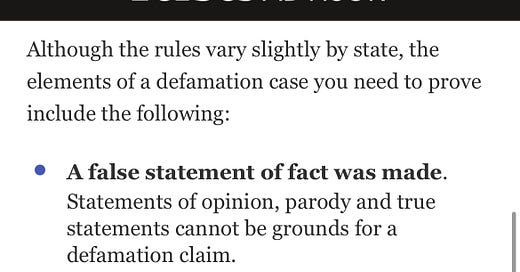Free speech under attack: the weaponization of defamation law
PART 1: Defamation cases are supposed to be tough to win, for good reason. Having courts police speech should be a last resort. But not when it comes to debates over climate change, apparently.
(PART OF A SERIES ON THE GROWING THREAT TO FREE SPEECH; FOR THE INTRODUCTION, CLICK HERE)
(FIRST OF TWO PARTS: Why winning a defamation case in the United States is so hard, and the background on Michael Mann’s lawsuit against Mark Steyn and Rand Simberg.)
For decades, winning a defamation suit in the United States was almost impossible.
Oxford Language ca…
Keep reading with a 7-day free trial
Subscribe to Unreported Truths to keep reading this post and get 7 days of free access to the full post archives.



